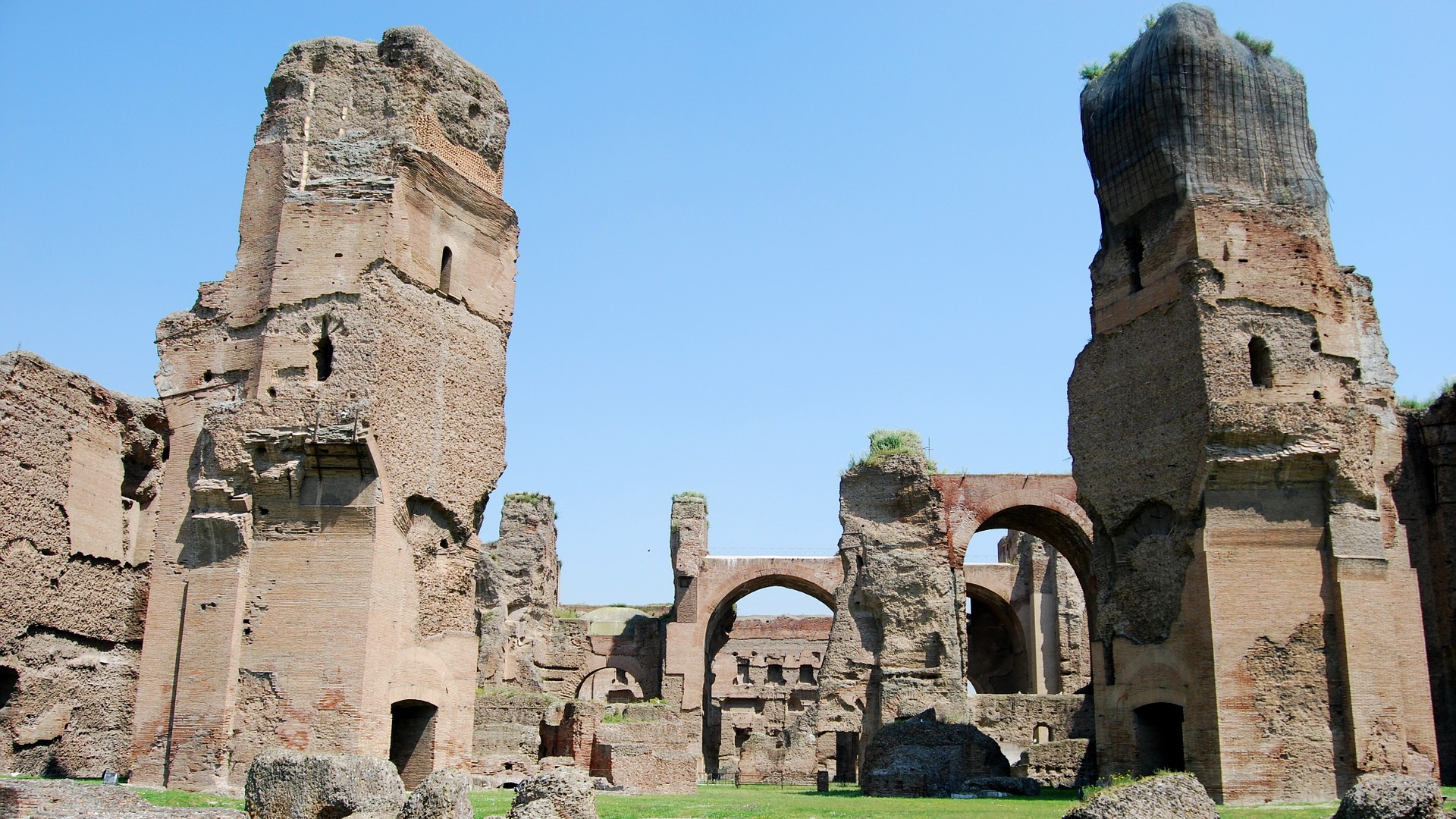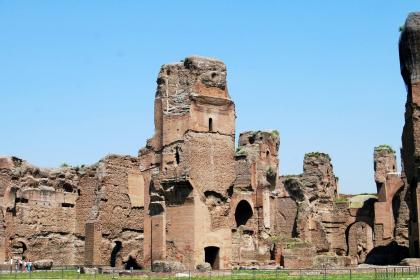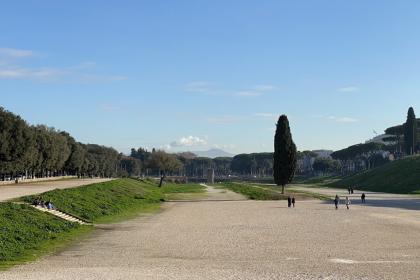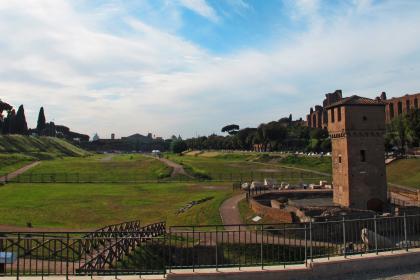
Fundamental to the subsistence of the complex, the underground passages of the Baths of Caracalla teemed with hundreds of slaves and workers who ran the ingenious technological machine of the Baths.
About two kilometers long, the underground level housed numerous carriageable tunnels that lodged the timber stores, the heating system - with ovens and boilers - a water system, a mill, and the Mithraeum.
One of the largest preserved in Rome, the Mithraeum of the Baths of Caracalla, discovered in 1912, was the place of worship of the god Mithras, a solar deity of oriental origin. Dating from shortly after the construction of the baths - the beginning of the 3rd century AD - it consists of five rooms communicating with the upper floor through a staircase accessible through a small door. The main chamber is a large rectangular room with cross vaults, closed by a door.
The floor is a white mosaic with black bands; at the sides are two high counters, the praesepia, where the faithful sat during ceremonies. On one of the walls is a fresco depicting the god Mithras and a torch-bearing figure holding a solar disk in his left hand. In the centre of the room is the fossa sanguinis. It is a rectangular hole where, according to tradition, the bull was sacrificed, following the cult of Mithras. Perhaps, it was used for the initiations of the followers of the cult.
The presence of the Mithraeum denotes the close connection to the cults of oriental origin of the Severan family, to which emperor Caracalla belonged.
From this room, you enter another where you can see a brick counter and a small basin with steps in the middle.
Inside the Mithraeum, you can admire the fragments of a group of statues depicting Mithras killing a bull and an altar.
The Baths of Caracalla

 Condividi
Condividi
Circus Maximus

 Condividi
Condividi
Torre della Moletta and the archaeological area of the Circus Maximus

 Condividi
Condividi
Information
Accessible only during special events or visits.
 Condividi
Condividi
Location
To find out about all accessibility services, visit the Rome accessible section.











































